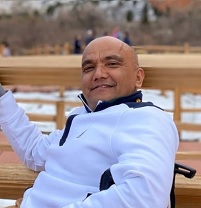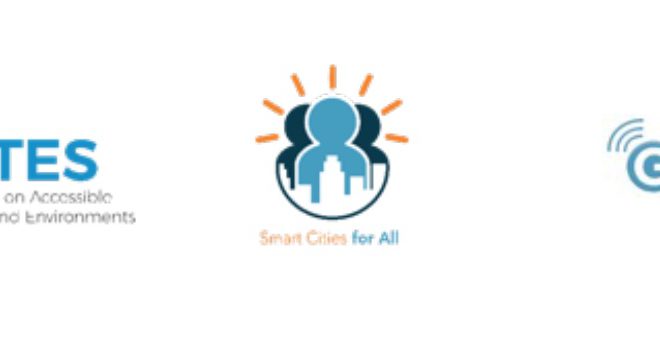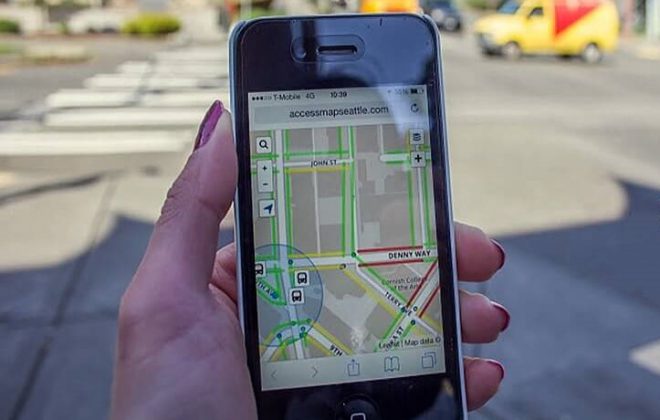My Experiences as a Trainer at the ‘Making Homes Accessible to All’ Project Training for Trainers Session
In Nepal, especially it’s capital Kathmandu, we have made a long journey in accessibility. There was a time when we could scarcely see a ramp in a public building. Today, however, ramps seem to be a common feature of recently constructed public buildings. Large projects ensure they do not miss the opportunity to highlight their accessibility features to the media. Increasingly, parks, restaurants, cinema theaters are trying to incorporate accessible design.

Above image description. Deepak Khatri Chhetri addressing the audience at the training session.
However, there still seems to be a lack of a clear vision and presence of solid policies from the government to implement accessibility. Disabled People's Organization’s (DPOs), whose continuous advocacy and role as a watchdog are crucial, have not yet been able to find the right direction. Current accessibility guidelines, therefore, appear to have a gentler appeal than the impact of mandatory law. As a result, professionals like architects and engineers continue to be reluctant to implement accessibility as part of their new projects.
As an active member of a DPO, I initially believed that advocacy by targeting social stigmas instead of focusing on technical details was important for further implementation of accessibility. I also firmly held that change is only possible by strong political will.
But a lot of my opinions have changed since my participation at the Training of Trainers for the World Bank Group Nepal funded Earthquake Housing Reconstruction Project on Making Homes Accessible to All. Thanks to my interaction with engineers and architects at the training session, I now believe that education, sensitization, and training are crucial pivot points towards increasing accessibility implementation.
Educating professionals, providing them with the right information is very crucial and needs immediate action. At the training session, it was perceived, that most architects and engineers had a limited understanding of nuances of accessibility.
For example, during a practical session, despite their technical background, most professionals struggled to design a proper ramp when given different building scenarios.
Moreover, in many cases, when designing ramps, they only focused on details helping to meet standards and neglected other aspects, such as aesthetics and cost. A case in point, putting a long-stretched ramp with hand-rails throughout the building did meet standards but revealed their limited exposure to accessible design. Unfortunately, no one thought of easy alternatives such as reducing the plinth height to improve functionality and present a pleasing design. It goes without saying, that nobody would like a displeasing and costly design.

Above image description. Demonstrating making accessible design by the use of local materials through the example of a ramp
Such ideas exist precisely because the right information, ideas leading with examples are taught as part of formal education to our engineers and architects. Added to that is the lack of opportunity to view such practical examples to design ramps that are functional and pleasing in design, yet cost-effective. Thus, a large emphasis during the Training of Trainers was kept on not only motivating the participants to meet standards but also inspire them to be innovative and creative.
We also utilized the user expert approach. Instead of only concentrating on theoretical aspects, we invited people with different disabilities and from diverse backgrounds to share their everyday barriers and interact with the participants. This approach helped participants understand often-overlooked smaller elements that, if rectified, can make a big impact. For example, during the session, a participant exclaimed, “I now realize how my newly built house is probably inaccessible to my mother. The session opened my eyes to a lot of things previously overlooked and I am going to henceforth use the principles taught as a guide in my professional life.”
 Above image description. Demonstrating user expert approach in the planning stage of design
Above image description. Demonstrating user expert approach in the planning stage of design
A district chief engineer also said during the session, “This training has made me focus on how I can utilize the knowledge and skills learned during this session towards making accessible homes for beneficiaries with disabilities in my district.”
Due to a lack of specific training and specialized university courses on accessible and universal design currently, professionals are only interpreting what works best for them, which often leads to confusion and could be a recipe for disaster. Sadly, accessible design is narrowly looked at as only for persons with disabilities and universal design as an advanced concept with no possibility of its implementation in Nepal. Thus, the practical session was important for breaking these misconceptions and gave the participants the practical tool to learn and apply basic concepts of accessible design using local materials. The practical session helped participants practice different techniques and approaches and utilize local materials suitable to local contexts.
While this was not my first time engaging as faculty for a training of trainers of field engineers and architects, this experience was different than the others. Along with the participants, I took back a lot of learning and insights to prepare for future sessions of training such as this, so that we continue to keep the momentum for driving accessibility in Nepal.
Deepak Khatri Chhetri is an architect and an active leader in the disability movement and a founding member of Independent Living Center Kathmandu, which leads Nepal’s efforts for the implementation of the UN Convention on the Rights of Persons with Disability. He is a registered life member of the Society of Nepalese Architects and the Nepal Engineering Association. In addition, he is an active member of National Paralympic Committee and currently serves as its deputy secretary-general.
Deepak is the G3ict-Smart Cities for All Representative for Nepal.
Upcoming Events
There are no upcoming events.





